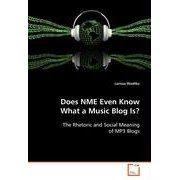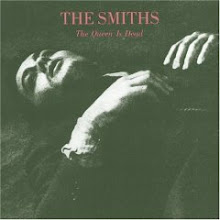
I only recently got to see the 2006 film Electroma, which was directed and written by Daft Punk (Thomas Bangalter and Guy-Manuel de Homem-Christo) and which recently released on DVD. Though I can't say I'm very familiar with previous Daft Punk film efforts, this piece does stand out as not including any music from the electro duo, and I think this aspect was key to its impression on me; rather than shoe-horn in music that doesn't fit the story or use predictable electronic music for a film about robots, Daft Punk chose to paint feelings onto their robots through strokes of genius music. Also, rather than donning the iconic helmets themselves this time, Bangalter and de Homem-Christo have Peter Hurteau and Michael Reich play the two hero automata, walking purposefully about in their Hedi Slimane-designed, skin-tight leather suits as the soundtrack alternates from an eerie, nearly uncomfortable silence, to the likes of Brian Eno, Haydn, Chopin, Linda Perhacs, and Sebastien Tellier. There's something about its cinematography that gives it a rougher '70's feel - like one of those older films predicting the future, not the slick CGI films of today.
The narrative of this minimalist sci-fi follows the two robot heroes in their failed quest to become human. While the visuals are hugely important, exploiting the alien-like sandscapes of the American southwest and using interesting effects in which white figures void out everything else in a white laboratory, the music is equally important through its restrained use. The film opens to silent abstract shots of the natural rock formations in the American southwest desert before the robot duo (one with a silver helmet and one with a gold one) get into their Ferrari and drive down endless highways, both silently and then to Todd Rundgren's International Feel, which communicates a very human feeling of excitement and adventure on the open road. When the robots finally enter a town, you realize that in this version of reality, everyone is a robot, making the duo's quest for humanity a stranger reversal of Frankenstein. Interspersed throughout the film are inexplicable flames, a portent of a grim ending, licking at the celluloid and burning into the narrative.
In this film, music tends to come as a relief for the pregnant silences, and I found myself actually musing about the choice of music for each scenario it illustrated; the music's meaning was heightened to the point that it couldn't be merely ignored or subsumed into the background. For example, after the heroes' helmets are covered in oversized, plastic human faces, they stroll proudly through the streets to the hugely appropriate, jaunty Billy Jack by Curtis Mayfield. Their stroll and the song abruptly ends as the duo confront a child robot holding an ice cream cone and he/she drops it on the pavement in one of the most salient images of the movie. Of course without the skillful manipulation of music and silence, this specific shot wouldn't have carried the meaning it does. The music shifts soon after to sombre choir music as the two heroes are chased by an impassive mob of robot citizens; the contrast to the earlier Mayfield is palpable as the heroes no longer strut, but stumble along, trying to shield themselves from the sun, which is melting their human masks into deformity. When they take refuge in a run-down public toilet, the gold robot furiously tears at his human mask and wig, and in another salient image, his human face stares up at the camera while being flushed down the toilet. In contrast and without the aid of dialogue, the silver-headed robot appears more reluctant to shed the grotesque remnants of his human face as he stares at himself in the mirror and a faulty lightbulb strobes and sways above him, mimicking the silver robot's emotional turmoil.
One of the main criticisms of Electroma was the sequence in which the two robot heroes walk endlessly through the sun-baked salt flats - and I will admit it's pretty wearisome and tedious, but at the same time, I can see why it was likely included to highlight just how pointless, lonely and endless their quest is. This sequence also reveals subtleties that foreshadow their unhappy end, particularly the fact the silver robot's head remains slightly bowed as he walks while the gold robot remains completely erect; of course this small detail blossoms into fruition as the silver robot begins to lag behind his more purposeful companion. After forcing his gold-headed companion to trigger the detonator on his back, the silver automaton walks a fair distance away to commit a rather explosive suicide. As the gold robot ranges over the cracked earth, which is covered in shards of black plastic and metal, his grief is made poignant and real with classical piano translating via minor chords.
During yet another deafening silence, in one of the most pitiful and memorable scenes of the film, the remaining hero is helplessly writhing, his helmet grinding into the dust, trying to no avail to reach the detonating lever on his own back. Ultimately, the robot decides to remove his helmet, and when he does, I actually felt surprised - because I had so much emotionally invested in these robots, I was a little unsettled by the flat circuitboard face even though I knew there wouldn't be a human face beneath the helmet. Ultimately, the gold robot sets himself on fire with the same sun that stripped him of his dream of being human, and the film closes with the gold robot as a figure in flames, striding across the darkened, voided landscape as the haunting and mournful Jackson C. Frank's Dialogue plays. In my opinion, the song is the star of this scene.
This film had more of an emotional effect on me than I would have expected. Because this film is about robots, who ostensibly cannot have emotions, but who in the heroes' case do have, the soundtrack, with its alternation between clinical silence and beautiful, affective pieces of music, reflects this dilemma. And unlike a ham-fisted music video of quick cuts and less than salient imagery, this film is a piece of art that unfolds naturally with its music, building, receding, undulating. Despite my pre-conceived notions of a Daft Punk film, Electroma is a well-crafted piece that, for me, emphasizes the connection of music to affect, the connection between music and humanity. Where even the long, blank stares of robots with only a black visor in place of human features, can convey that, in fact, they are human after all.
Human After All - Daft Punk
I Want to Be Alone (Dialogue) - Jackson C. Frank





















































No comments:
Post a Comment